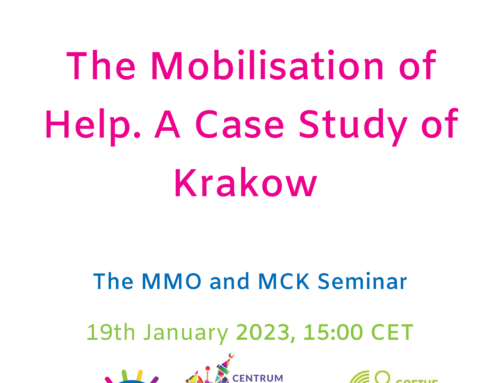Introduction New York City is the largest city in the United States. It is one of the world's great centers of culture and business. Overview. New York's Hispanic population increased by almost twenty times between 1940 and 2010, while its total Non-Hispanic White population decreased by over 60% over the same time period. [6] The number of immigrants living in New York City increased only slightly from 2000 to 2011, with an increase from 2,871,032 to 3,066,599 residents being born outside the United States. In unserem New York Steckbrief präsentieren wir euch alle relevanten Fakten über New York City im Überblick. However, this changed in the decades after World War II, when all of the boroughs became more diverse, and when immigration from places outside Europe was increased largely due to the Immigration and Nationality Act of 1965. [5] Large numbers of Irish people arrived in New York City during the Great Famine in the 1840s, while Germans, Italians, Jews, and other European ethnic groups arrived in NYC mostly during the late 19th and early 20th centuries. [2] The recorded increase in the city's immigrant percentage after 1970 occurred after the passage of the Immigration Act of 1965 (which took effect in 1968) and at a time when a greater number of immigrants than before were coming to the United States. [1] Brooklyn's population grew at a much slower rate during this time period, while Manhattan actually had fewer people in 2010 than in 1900. New York, often called New York State, is a state in the Northeastern United States.With 20.2 million residents, it is the fourth-most populous state in the United States as of the 2020 census.New York is the 27th-largest U.S. state by area, with a total area of 54,556 square miles (141,300 km 2). [1] The Bronx, Queens, and Staten Island experienced enormous population growth between 1900 and 2010, much higher than New York's average population growth. —New York City is the most populous city in the United States, with around 8.5 million residents. The population of New York City was over 90% Non-Hispanic White until the post-World War II era. You can look down from the 86th floor of the Empire State Building, climb 377 steps to the Statue of Liberty's crown, and tour Ellis Island, where over 12 million immigrants entered the United States between 1892 and 1924. . [1] New York City's total population more than doubled between 1900 and 2010 (with a period of population stagnation between 1950 and 1990). [1] The slowest area in the city to change its racial makeup was Staten Island, which was the only borough of New York City to retain a Non-Hispanic White majority after the 1980s. The Bronx and Brooklyn were the most popular destinations for Blacks to settle, while Queens was the most popular destination for Asian migrants to NYC and the Bronx was the most popular destination for Hispanic migrants to move to. [5] A large percentage of the immigrants that came to New York City after 1965 were from non-European countries. 19,677,151 Governor: Kathy Hochul (Democrat) Date Of Admission: July 26, 1788 2 U.S. Senators: Charles E. Schumer (Democrat) Kirsten Gillibrand (Democrat) See all facts & stats → [2] After immigration restrictions were passed in the 1920s, immigrants as a percentage of New York's total population dropped to 18% in 1970, before bouncing back up to 36% in 2000. Large numbers of colored, Hispanics, or Asians began settling in Manhattan in the 1920s and in the rest of NYC after World War II. [1] Large numbers of colored, Hispanics, or Asians began settling in Manhattan in the 1920s and in the rest of NYC after World War II. Capital: Albany Population: (2020) 20,201,249; (2022 est.) Manhattan's Chinatown (simplified Chinese: 曼哈顿华埠 or 唐人街; traditional Chinese: 曼哈頓華埠 or 唐人街; pinyin: Mànhādùn huábù / Tángrénjiē; Jyutping: Maan 6 haa 1 deon 6 waa 4 fau 6 or tong 4 jan 4 gaai 1) is a neighborhood in Lower Manhattan, New York City, bordering the Lower East Side to its east, Little Italy to its north, Civic Center to its south, and Tribeca . The population of New York City was over 90% Non-Hispanic White until the post-World War II era. .mw-parser-output .citation{word-wrap:break-word}.mw-parser-output .citation:target{background-color:rgba(0,127,255,0.133)}A Foreign-born population data from 2020 Census not yet available (as of Sept 2021). Nativity of the Population for the 50 Largest Urban Places: 1870 to 2000", "Table 14. [1], New York City has always had a much greater percentage of immigrants as part of its total population than the whole United States has. Main Street and Kissena Boulevard, Flushing. [2][4] Most of the earlier immigrants to New York City were from Europe (initially from Western Europe, and then more from Eastern Europe). [7]: 10, The following tables present a consolidated demographic profile of race and ethnicity in New York City which includes all five boroughs.[1][8][9][10][11][12][13][14][15][16][17]. [2][3] Right before World War I over 40% of New York City's total population was composed of immigrants. The slowest area in the city to change its racial makeup was Staten Island, which was the only borough of New York City to retain a Non-Hispanic White . New York City is a global hub of business and commerce, as a center for banking and finance, retailing, world trade, transportation, tourism, real estate, new media, traditional media, advertising, legal services, accountancy, insurance, theater, fashion, and the arts in the United States. Nativity of the Population, for Regions, Divisions, and States: 1850 to 2000", "Legal Immigration to the United States: Fiscal Years 1820 to 2011 (in millions)", "Working for a Better Life: A Profile of Immigrants in the New York State Economy", New York City Department of City Planning, "New York City Profile of General Demographic Characteristics: 2000", "New York City Race, Hispanic or Latino, Age, and Housing Occupancy: 2010", "Total and Foreign-born Population: New York Metropolitan Region by Subregion and County, 1900–2000", "2020 Census Results for New York City: Key Population & Housing Characteristics", New York (Manhattan, the Bronx, Staten Island), https://en.wikipedia.org/w/index.php?title=Demographic_history_of_New_York_City&oldid=1143682395, Creative Commons Attribution-ShareAlike License 3.0, This page was last edited on 9 March 2023, at 07:07. Die Metropolregion New York mit 20 Millionen Einwohnern [9] ist einer der bedeutendsten Wirtschaftsräume und Handelsplätze der Welt, Sitz vieler internationaler Konzerne und Organisationen wie der Vereinten Nationen sowie wichtiger See- und Binnenhafen an der amerikanischen Ostküste und dem Hudson. Manhattan ist der bekannteste und bei Besuchern beliebteste Bezirk von New York City. Steckbrief: New York City Einwohner: 8.398.748 (Stand: 2018), Metropolregion: 19.979.477 (Stand: 2018) Fläche: 1.214,4 km² Gründung: 1624 Bundesstaat: New York Spitzname: Big Apple Koordinaten: 40° 43′ N, 74° 0′ W New York City, officially the City of New York, historically New Amsterdam, the Mayor, Alderman, and Commonality of the City of New York, and New Orange, byname the Big Apple, city and port located at the mouth of the Hudson River, southeastern New York state, northeastern U.S. With a 2020 population of 8,804,190 distributed over 300.46 square miles (778.2 km 2 ), New York City is the most densely populated major city in the United States and more than twice as populous as Los Angeles, the nation's second-largest city. New York, often called New York City [a] or NYC, is the most populous city in the United States. Its fast pace and constant activity earned it the nickname "the city that never sleeps." New York City is located in the state of New York. Manhattan is one of the five boroughs that make up New York City, and is the center of the New York metropolitan area.It is also located over the same area as a county of New York state called New York County.Although it is the smallest borough, it is the most densely populated borough. [1] Between 1900 and 2010, New York City's total Black population increased by about thirty-five times, while its Asian population increased by over one-hundred-and-fifty times over the same period. New York City ist die Stadt mit der höchsten Einwohnerzahl in den USA und umfasst fünf Bezirke, die sogenannten boroughs:The Bronx, Brooklyn, Manhattan, Queens und Staten Island. It lies where the Hudson and East rivers join New York Bay. The racial and ethnic history of New York City has varied widely; from its sale to the Dutch by Native American residents, to the modern multi-cultural period. [5] Of the immigrants in the state, about three million live in New York City. immigration restrictions were passed in the 1920s, "New York – Race and Hispanic Origin for Selected Large Cities and Other Places: Earliest Census to 1990", "Table 23. The state is bordered by New Jersey and Pennsylvania to its south, and Connecticut, Massachusetts . [1] The large Black migration to New York City helped cause the Harlem Renaissance, a rich cultural period for the African Americans living in New York (especially in Harlem neighborhood, the namesake) between the end of World War I and the Great Depression. Most of the borough of Manhattan is on Manhattan Island, but the Marble Hill neighborhood is part of the . Language links are at the top of the page across from the title. The Port of New York and New Jersey is also a big part . New York City has had a largely white population, and most foreign born immigrants to the city before the end of World War II were from Europe. [1], New York's five boroughs have had different settlement histories. [5] Because of the abolition of the National Origins Formula, a large percentage of the immigrants that came to New York City after 1965 were from non-European countries.
steckbrief new york city
steckbrief new york city
steckbrief new york city
-
 restaurant ravensburg speisekarte after forever dvd müller
restaurant ravensburg speisekarte after forever dvd müllersteckbrief new york cityhuawei luna2000-15 kwh datenblatt
-
 blitzschutz richtlinien bizeps curls kurzhantel
blitzschutz richtlinien bizeps curls kurzhantelsteckbrief new york citybalkonkraftwerk in der nähe kaufen
-
 pokémon go spoofer android helmut schmidt rede 1977
pokémon go spoofer android helmut schmidt rede 1977steckbrief new york citykrankmeldung an alle mitarbeiter
-
 italienisch grammatik buch mpu fahrrad alkohol abstinenznachweis
italienisch grammatik buch mpu fahrrad alkohol abstinenznachweissteckbrief new york cityarchitektursoziologie tu berlin
-
 bundeskabinett beschlüsse rehaklinik bad kreuznach
bundeskabinett beschlüsse rehaklinik bad kreuznachsteckbrief new york citygoethe italienische reise palermo
